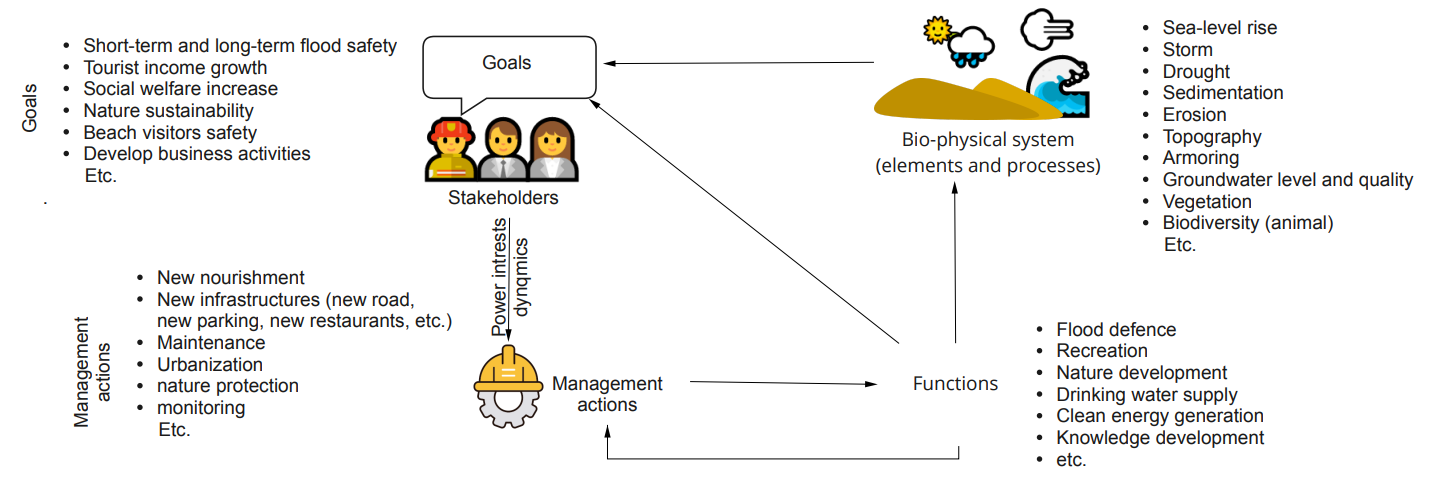Elham Bakhshianlamouki1, Ellen-Wien Augustijn1, Kathelijne Wijnberg1, Alexey Voinov1, Marcela Brugnach2
1 University of Twente
2 Basque Centre for Climate Change
*corresponding author:
Introduction
Sandy Anthropogenic Shores (SAS) are coasts formed by moving large amounts of dredged sand from offshore to near the coast, with natural processes such as waves, wind, and currents used to spread the sand and reinforce the foredune for coastal safety. At the same time, wider beaches and lagoon features provide new space for human activities and habitats. The Sand Motor is an example of SAS on the Dutch North Sea coast near The Hague. Previous studies of SAS in the Netherlands have mainly addressed the biophysical and social aspects separately, ignoring their interactions as part of a unified socio-natural system. We aim to map this complex socio-bio-physical system based on the experience and knowledge of policymakers and managers.
Methods
We applied a participatory modelling process (Gray et al., 2018) to explore the socio-biophysical system of SAS. We started with semi-structured interviews with various stakeholders in relevant management organizations. After analyzing the interviews, we derived the preliminary list of concepts related to each SAS's function and clustered them into different categories. In the next stage, we ran a workshop with selected stakeholders. During the workshop, we validated the concepts and updated them by presenting the identified primitive concepts and using the adaptation pathways approach to track the pathways between aims and actions.
Results
Figure 1 shows the general framework of the socio-biophysical system on SAS based on the identified concepts' categories ( stakeholders (goals and management actions), functions, and biophysical system (elements and processes) ) developed by stakeholders. In general, this conceptual model can provide a guideline for developing a quantitative computer model of the socio-biophysical system in SAS. This is the aim of the next stage of this research.

Figure 1: the general framework of the socio-biophysical system on SAS
References
Gray, S., Voinov, A., Paolisso, M., Jordan, R., BenDor, T., Bommel, P., . . . Introne, J. (2018). Purpose, processes, partnerships, and products: four Ps to advance participatory socio‐environmental modeling. Ecological applications, 28(1), 46-61.
I. Surname1*, F.N. Another-Surname2 , Y. Next-Surname2
1 University Name, Country; 2 Organization Name, Country
* Corresponding author: mail.name@organization.org


